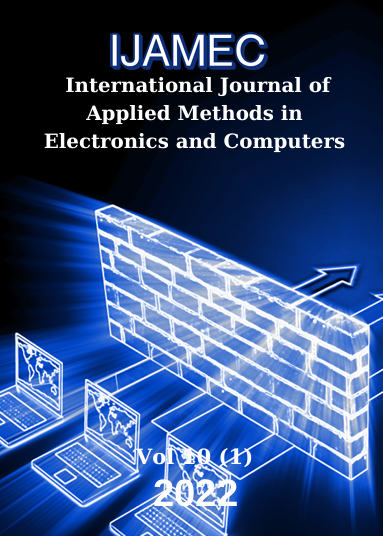Prototyping of a Novel Thruster for Underwater ROVs
DOI:
https://doi.org/10.18100/ijamec.1045491Keywords:
Finite element analysis, ROVs, Fluid analysis, ThrusterAbstract
Underwater vehicles are expected to have flexible maneuverability to perform various tasks such as security, reconnaissance, and search rescue. This maneuverability depends on the thruster to perform the specified tasks effectively. The designs of the propeller and the duct in the thrusters have a significant effect on the vehicle's mobility as it directly affects the thrust force. An ergonomic design is aimed by choosing the optimum level in terms of efficiency for the number of propeller blades. In addition, a duct design is needed to prevent water escape due to propeller movement. In this study, an original thruster has been designed by making theoretical calculations. The designed thruster has been analyzed using the Finite Element Analysis (FEA) method. The thrust, friction, torque, and efficiency values of the developed thruster have been calculated using momentum theory and supported by fluid mechanics analysis. In line with the analyses, the prototype of the designed thruster has been manufactured and the necessary performance tests were carried out on an autonomous underwater vehicle named Fersah-ROV, which was also originally designed and manufactured.Downloads
References
T. N. Huy, Q. T.-D. Tran, N. D. Nguyen ve H.-S. Choi, “Study on Design, Analysis and Control an Underwater Thruster for Unmanned Underwater Vehicle (UUV),” International Conference on Advanced Engineering Theory and Applications, 2018.
Y. S. Song ve M. R. Arshad, “Thruster Modeling for a Hovering Autonomous Underwater Vehicle Considering Thruster-Thruster and Thruster-Hull Interaction,” IEEE International Conference on Underwater System Technology: Theory and Applications (USYS), 2016.
Y. Luo, J. Tao, Z. Li, L. Ding, Z. Deng, H. Sun ve X. Song, “An Accurate Cavitation Prediction Thruster Model based on Gaussian Process Regression,” IEEE International Conference on Robotics and Biomimetics (ROBIO), Macao, 2017.
E. Gungor, “Hydroacoustical investigation on a generic underwater vehicle using Lighthill-Curle,” Journal of The Faculty of Engineering and Architecture of Gazi University, 34, 3, 1351-1364, 2019.
M.-F. Hsieh, J.-H. Chen, Y.-H. Yeh, C.-L. Lee, P.-H. Chen, Y.-C. Hsu ve Y.-H. Chen, “Integrated Design and Realization of a Hubless Rim-driven Thruster,” The 33rd Annual Conference of the IEEE Industrial Electronics Society (IECON), Taipei, 2007.
A. Healey, S. Rock, S. Cody, D. Miles ve J. Brown, “Toward an improved understanding of thruster dynamics for underwater vehicles,” IEEE Symposium on Autonomous Underwater Vehicle Technology (AUV'94), USA, Cambridge, 1994.
İ. Gov, “Rotor Spacing and Blade Number Effect on the Thrust, Torque, and Power of a Coaxial Rotor,” El-Cezeri Journal of Science and Engineering, 7, 2, pp. 487-502, 2020.
E. d. Barros ve J. L. D. D. Dantas, “Effect of a propeller duct on AUV maneuverability,” Ocean Engineering, 42, 61-70, 2012.
Downloads
Published
Issue
Section
License
Copyright (c) 2022 International Journal of Applied Methods in Electronics and Computers

This work is licensed under a Creative Commons Attribution-ShareAlike 4.0 International License.





